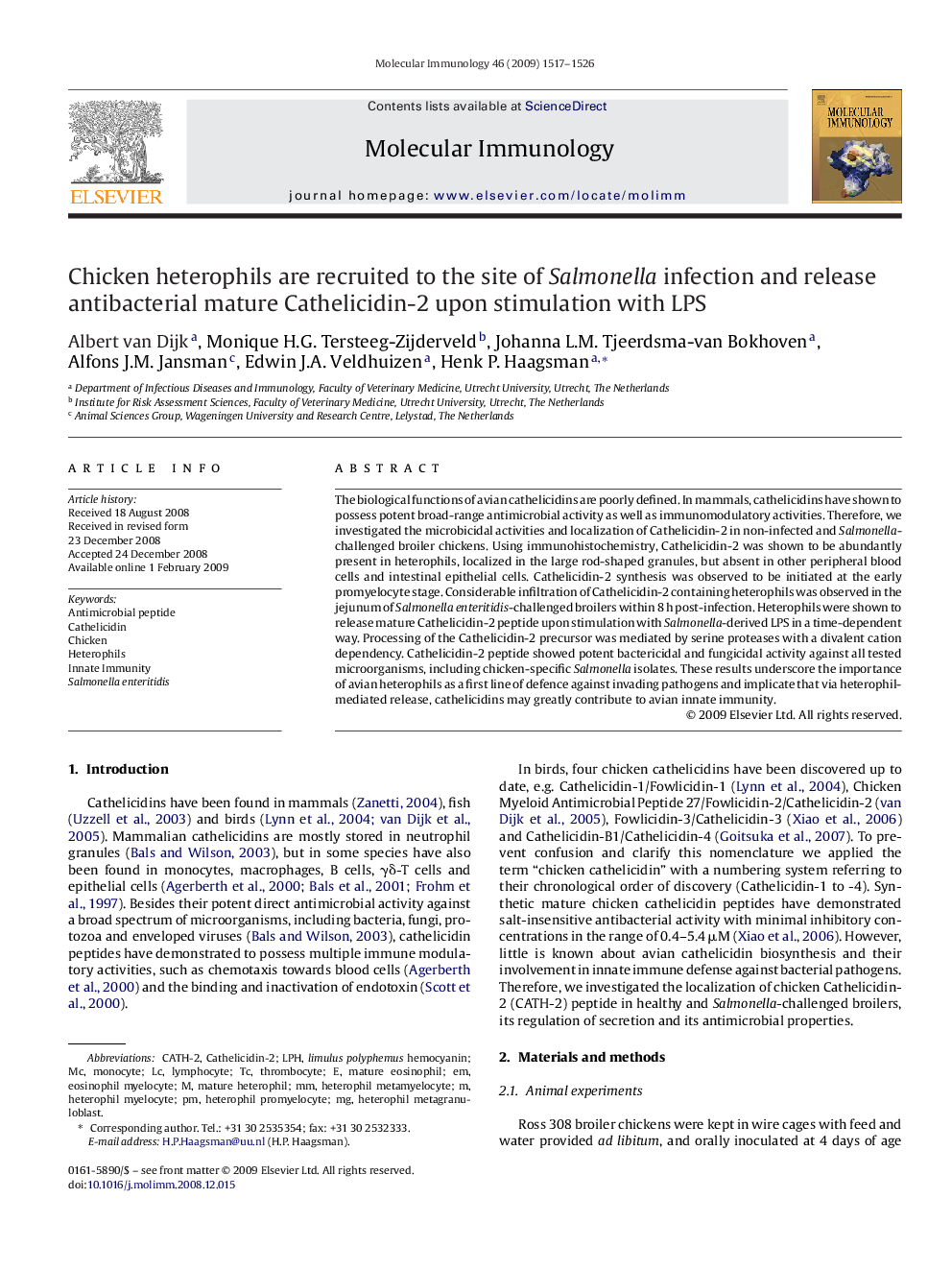| Article ID | Journal | Published Year | Pages | File Type |
|---|---|---|---|---|
| 5917912 | Molecular Immunology | 2009 | 10 Pages |
Abstract
The biological functions of avian cathelicidins are poorly defined. In mammals, cathelicidins have shown to possess potent broad-range antimicrobial activity as well as immunomodulatory activities. Therefore, we investigated the microbicidal activities and localization of Cathelicidin-2 in non-infected and Salmonella-challenged broiler chickens. Using immunohistochemistry, Cathelicidin-2 was shown to be abundantly present in heterophils, localized in the large rod-shaped granules, but absent in other peripheral blood cells and intestinal epithelial cells. Cathelicidin-2 synthesis was observed to be initiated at the early promyelocyte stage. Considerable infiltration of Cathelicidin-2 containing heterophils was observed in the jejunum of Salmonella enteritidis-challenged broilers within 8Â h post-infection. Heterophils were shown to release mature Cathelicidin-2 peptide upon stimulation with Salmonella-derived LPS in a time-dependent way. Processing of the Cathelicidin-2 precursor was mediated by serine proteases with a divalent cation dependency. Cathelicidin-2 peptide showed potent bactericidal and fungicidal activity against all tested microorganisms, including chicken-specific Salmonella isolates. These results underscore the importance of avian heterophils as a first line of defence against invading pathogens and implicate that via heterophil-mediated release, cathelicidins may greatly contribute to avian innate immunity.
Keywords
Related Topics
Life Sciences
Biochemistry, Genetics and Molecular Biology
Molecular Biology
Authors
Albert van Dijk, Monique H.G. Tersteeg-Zijderveld, Johanna L.M. Tjeerdsma-van Bokhoven, Alfons J.M. Jansman, Edwin J.A. Veldhuizen, Henk P. Haagsman,
